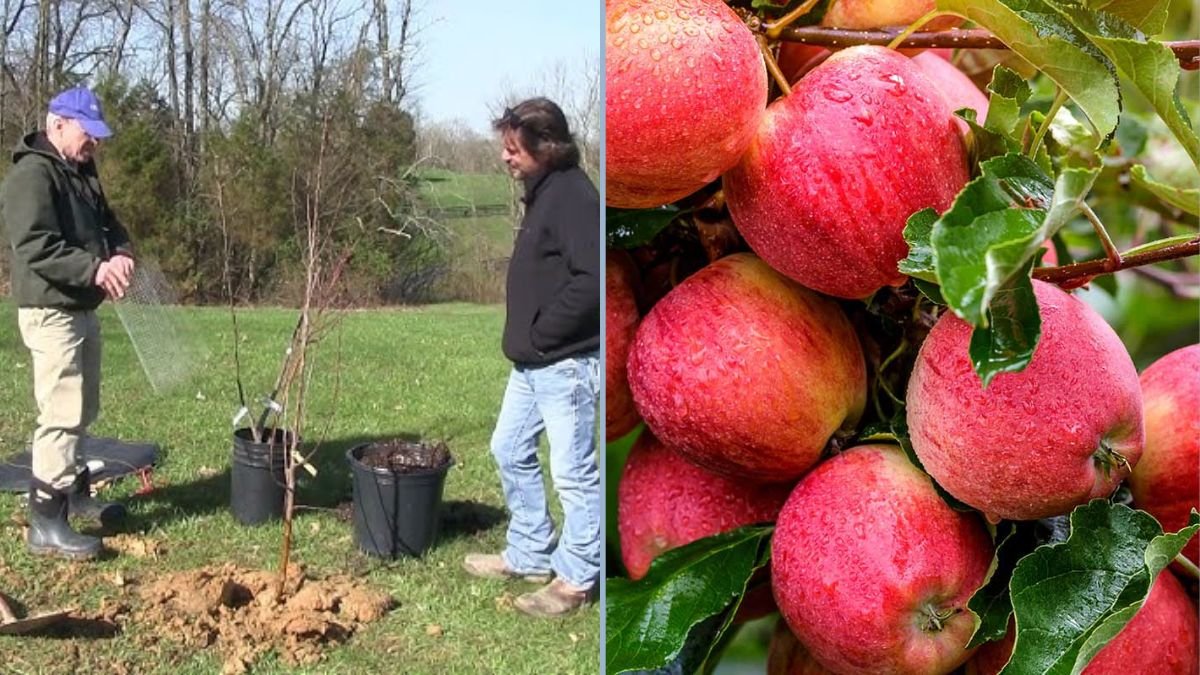Planting a young Jonathan apple tree is a rewarding step toward growing your own delicious, homegrown apples. Known for their bright red color, sweet-tart flavor, and crisp texture, Jonathan apples are perfect for eating fresh, baking pies, and making cider. With proper care, a young Jonathan tree can thrive in your backyard, producing fruit for years to come.
In this guide, we’ll cover selecting the right tree, planting, care, pruning, pest control, and tips for a successful Jonathan apple harvest. Whether you’re a beginner or an experienced gardener, this information will help you get the best start with your young apple tree.
Why Choose Jonathan Apple Trees?
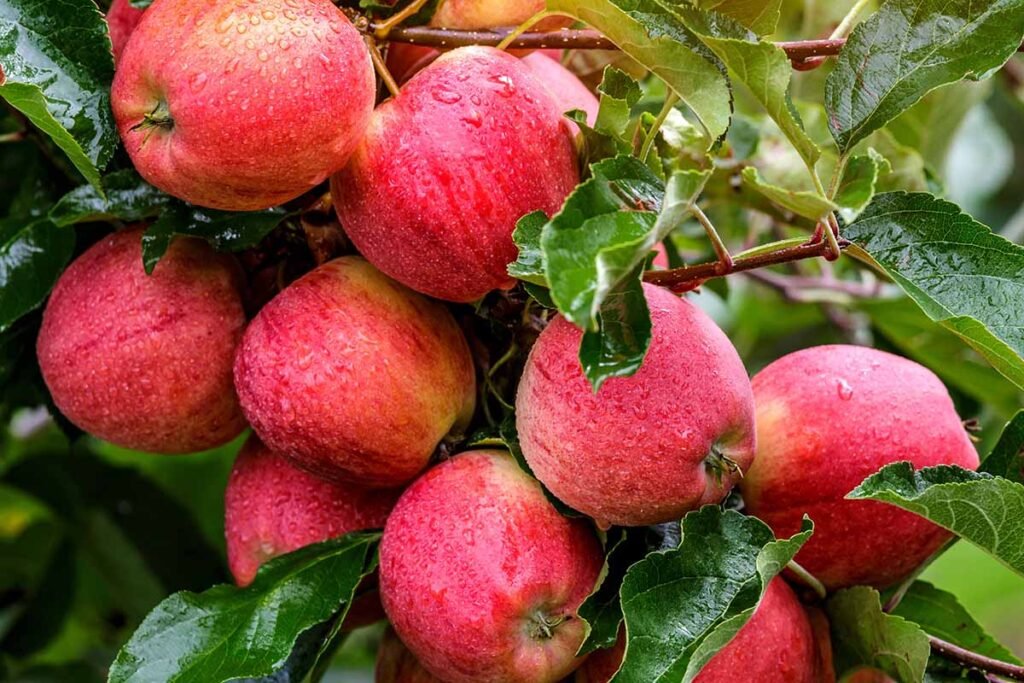
Jonathan apples are a classic heirloom variety prized for several reasons:
- Flavor: A balanced sweet-tart taste that is ideal for both fresh consumption and cooking.
- Versatility: Excellent for pies, sauces, cider, and fresh snacking.
- Reliable Yield: When properly cared for, Jonathan trees produce a consistent harvest.
- Appearance: Bright red skin and firm flesh make them attractive in the orchard and kitchen.
- Cold Hardiness: Suitable for a variety of climates, making them adaptable to many backyard gardens.
Choosing a Jonathan apple tree for your micro-orchard or backyard garden ensures high-quality fruit and an enjoyable growing experience.
Selecting the Right Young Jonathan Apple Tree
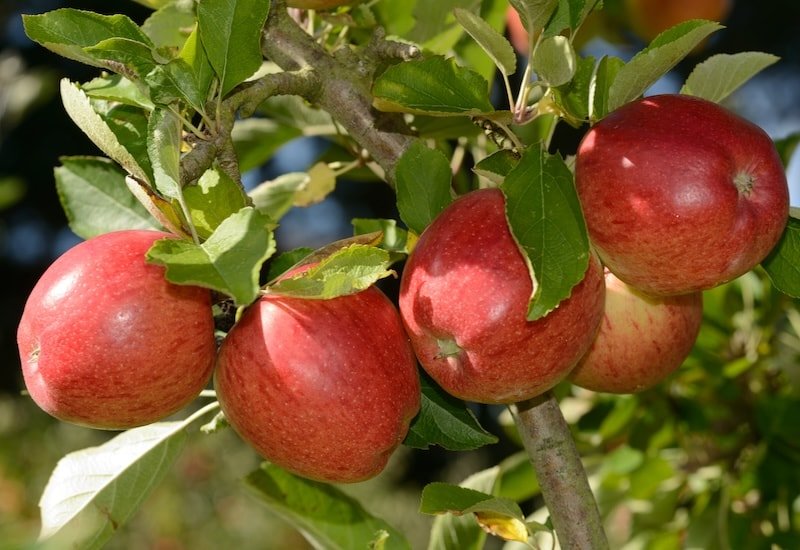
When starting with a young Jonathan apple tree, consider the following:
1. Tree Type
- Bare-Root Trees: Typically sold during winter dormancy, these are cost-effective and establish well when planted in early spring.
- Container-Grown Trees: Sold year-round, these trees reduce transplant shock and are easy to plant anytime when soil conditions are favorable.
2. Rootstock
Rootstock determines tree size, growth rate, and adaptability:
- Dwarf Rootstock: 8–10 feet tall; ideal for patios, containers, or small gardens.
- Semi-Dwarf Rootstock: 12–15 feet tall; perfect for backyard orchards with limited space.
- Standard Rootstock: 18–25 feet tall; suitable for larger garden spaces and maximum fruit yield.
3. Pollination
Jonathan apple trees are partially self-fertile, but cross-pollination with another apple variety (e.g., Red Delicious, Gala, or Fuji) improves fruit set, size, and quality. Bees and other pollinators are essential for fertilizing flowers.
Choosing the Planting Site
Jonathan apple trees thrive in a sunny, well-drained location. Consider the following factors:
1. Sunlight
- Requires 6–8 hours of direct sunlight daily.
- Adequate sunlight ensures sugar development, color, and flavor in apples.
2. Soil
- Well-draining, loamy soil is ideal.
- Soil pH: 6.0–7.0.
- Enrich the planting area with compost or well-rotted manure to support strong root growth.
3. Air Circulation
- Plant trees in open areas to reduce fungal diseases like apple scab and powdery mildew.
- Avoid low-lying areas where frost or water can accumulate, potentially damaging young trees.
4. Space
- Standard trees: 18–25 feet apart.
- Semi-dwarf: 12–15 feet apart.
- Dwarf: 8–10 feet apart.
Proper spacing ensures sunlight reaches all parts of the tree and makes pruning and harvesting easier.
Planting Your Young Jonathan Apple Tree

Planting properly sets the foundation for a healthy, productive tree.
Step 1: Preparing the Hole
- Dig a hole twice as wide as the root ball and slightly deeper than the roots.
- Loosen soil at the bottom to encourage root expansion.
Step 2: Positioning the Tree
- Place the tree with the graft union a few inches above soil level.
- Spread roots evenly and backfill with soil mixed with compost.
- Firm the soil gently to remove air pockets.
Step 3: Watering and Mulching
- Water thoroughly to settle the roots.
- Apply 2–3 inches of mulch around the base to conserve moisture and suppress weeds.
- Keep mulch a few inches away from the trunk to prevent rot.
Step 4: Staking
- Young trees may require a stake for support, particularly in windy areas.
- Remove the stake after one growing season when the trunk is strong enough to stand independently.
Caring for a Young Jonathan Apple Tree
Proper care ensures your tree grows strong and produces fruit.
1. Watering
- Water young trees 2–3 times per week to establish roots.
- Mature trees: Deep watering once a week, more frequently during dry spells.
- Mulch helps maintain soil moisture and temperature.
2. Fertilizing
- First-year trees: Focus on root establishment with light organic fertilizer.
- Second year onward: Apply a balanced fertilizer (10–10–10 NPK) in early spring.
- Avoid excess nitrogen, which encourages leaf growth over fruiting.
3. Pruning
Pruning helps shape the tree, promotes air circulation, and encourages fruiting.
Dormant Pruning
- Conduct pruning in late winter before new growth begins.
- Remove dead, damaged, or crossing branches.
- Maintain a central leader or open-center structure.
Summer Pruning
- Optional light pruning removes vigorous shoots and helps direct energy to fruiting branches.
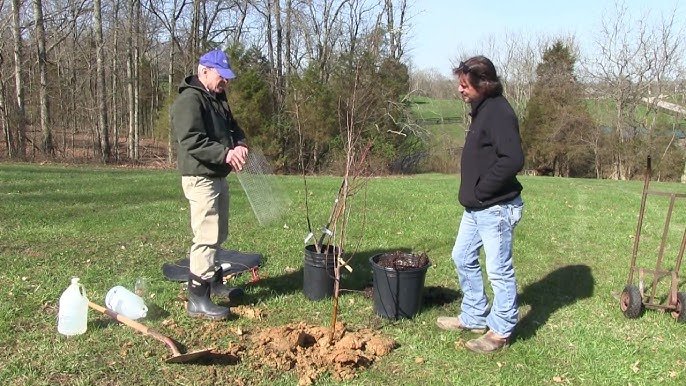
Pollination and Flowering
Jonathan apple trees produce beautiful white blossoms in spring.
- Plant a compatible apple variety nearby for cross-pollination to maximize fruit set.
- Bees and other pollinators are essential.
- Avoid pesticide application during bloom to protect pollinators.
Pest and Disease Management
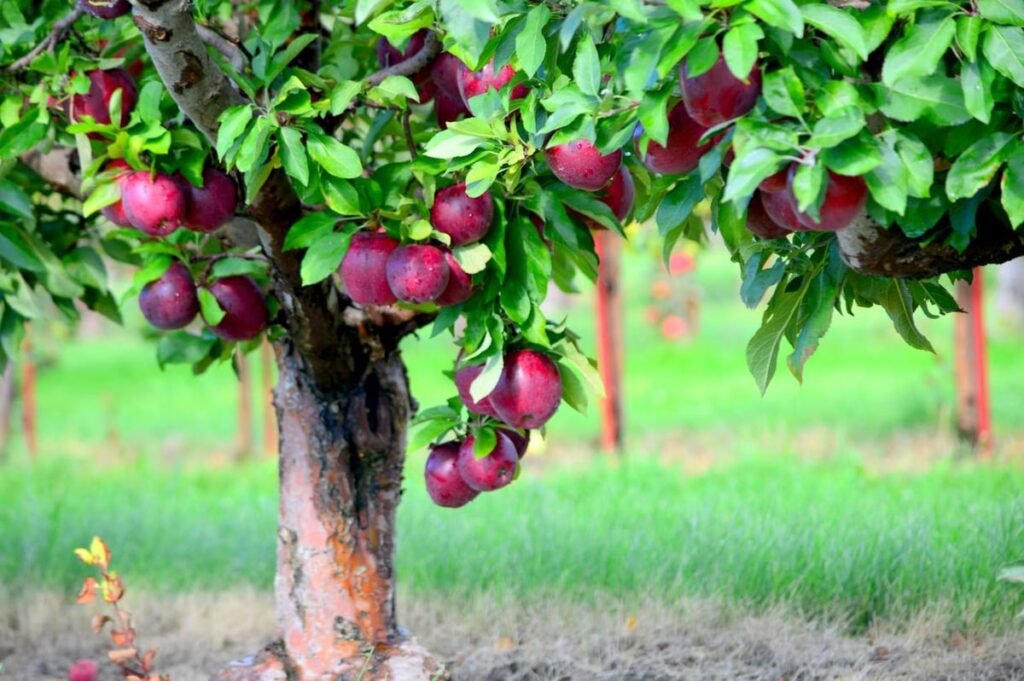
Even young Jonathan apple trees require monitoring.
Common Pests
- Aphids
- Codling moth
- Spider mites
Common Diseases
- Apple scab
- Powdery mildew
- Fire blight
Prevention Tips:
- Prune for airflow and sunlight penetration.
- Remove fallen leaves and fruit to reduce fungal buildup.
- Apply organic treatments like neem oil if necessary.
Thinning Fruit for Quality
- Thin young fruit clusters to 1–2 apples per cluster.
- Proper thinning reduces branch stress and ensures larger, sweeter fruit.
- Improves sunlight exposure for uniform ripening.
Harvesting Jonathan Apples
- Typically ready for harvest in late September to October, depending on climate.
- Signs of ripeness:
- Firm but slightly yielding
- Bright red color with green undertones
- Sweet-tart aroma
- Easy separation from the branch
- Harvest carefully using scissors or gently twist the fruit to avoid branch damage.
- Use fresh, bake into pies, or store in a cool location for later enjoyment.
Container Growing Young Jonathan Apple Trees
Dwarf or semi-dwarf Jonathan apple trees can thrive in large containers, perfect for patios or urban gardens.
Container Tips
- Use pots 18–24 inches in diameter with drainage holes.
- Fill with nutrient-rich soil mixed with compost and perlite.
- Water regularly, as containers dry out faster than in-ground trees.
- Prune to maintain a manageable size and encourage flowering.
Additional Tips for Success
- Monitor Growth: Regularly check for pests, diseases, and nutrient deficiencies.
- Mulch Annually: Helps retain moisture and regulate soil temperature.
- Support Young Trees: Stake to protect against wind and ensure straight growth.
- Practice Patience: Apple trees may take 2–4 years to produce fruit, depending on rootstock and care.
- Enjoy the Process: Gardening is about nurturing growth, and Jonathan apple trees reward your attention with both beauty and delicious fruit.
Conclusion
Planting a young Jonathan apple tree is an exciting and rewarding experience. By choosing a healthy sapling, selecting the right planting site, providing proper care, and practicing consistent pruning and pest management, you can establish a strong, productive tree that will provide sweet, crisp apples for years to come.
Whether planted in the ground or a container, a Jonathan apple tree is a versatile, attractive, and fruitful addition to your backyard. With patience, care, and attention, your tree will thrive, offering homegrown apples that are perfect for eating fresh, baking, or preserving, bringing the joy of orchard gardening right to your own home.
